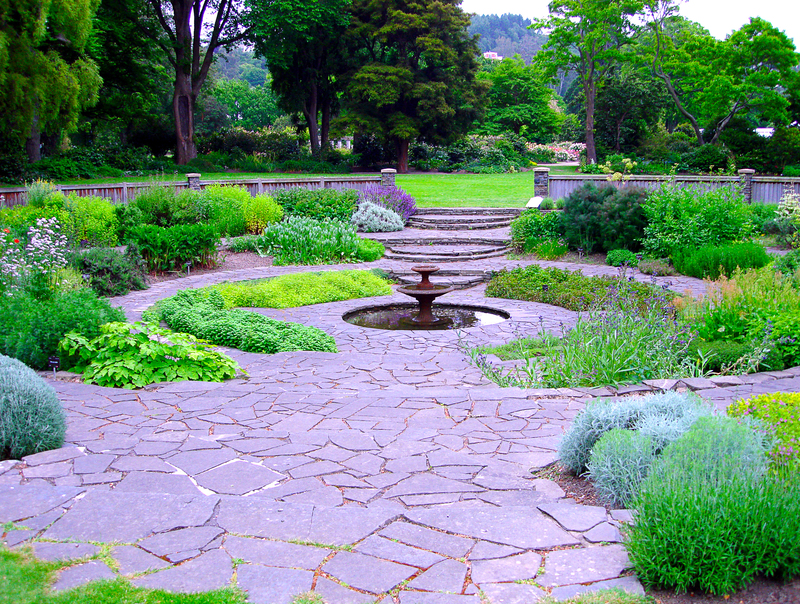Container Gardening: A Creative Approach to Urban Farming
Posted on 03/09/2025
Container Gardening: A Creative Approach to Urban Farming
Urban farming has taken root in cities worldwide, but with space at a premium, many metropolitan gardeners are turning to container gardening as a creative and practical solution. This innovative method of growing food and decorative plants provides a sustainable alternative to traditional ground-based gardens. Container gardening enables urban dwellers to cultivate a vibrant green space on balconies, rooftops, windowsills, and even small patios. Whether you're an experienced gardener or just starting out, this comprehensive guide will help you explore the benefits, techniques, and joys of container-based urban agriculture.

Why Choose Container Gardening for Urban Farming?

Urban environments can pose unique challenges for green-thumbed enthusiasts--limited space, poor soil quality, and in some cases, concrete surfaces everywhere. Container gardening offers adaptive solutions to these obstacles, transforming city living spaces into flourishing mini-farms. Here's why urban container gardening stands out:
- Space Efficiency: Utilize balconies, windowsills, patios, rooftops, and even vertical walls to maximize growing area.
- Mobility: Pots and planters can be moved to chase sunlight, protect against weather, or simply to redecorate.
- Soil Control: With containers, you control the soil blend, reducing the risk of soil-borne diseases and pests.
- Water Efficiency: Containers require less water than traditional garden beds and allow for more targeted irrigation.
- Versatility: Grow a diverse selection of herbs, vegetables, fruits, and ornamentals regardless of your city's native soil conditions.
- Accessible Gardening: Ideal for people with mobility challenges, since containers can be elevated to a comfortable working height.
Getting Started with Container Gardening in Urban Spaces
Choosing the Best Containers for Urban Gardens
Selecting the right type of container is fundamental for healthy plant growth. There are many factors to consider when picking pots, planters, and other types of containers for your urban farming project.
- Material:
- Terracotta pots offer breathability but dry quickly and can be heavy.
- Plastic containers are lightweight, affordable, and retain moisture.
- Fabric grow bags are collapsible and promote air pruning for healthier roots.
- Metal planters are durable but may heat up quickly in direct sun.
- Wooden boxes (like old crates or pallets) provide a rustic look but should be lined to prevent rot.
- Size and Shape: Deep containers are preferable for root vegetables, while shallow trays are ideal for greens. Always ensure that the container is large enough for your mature plant and its root system.
- Drainage: Proper drainage is essential to prevent root rot. Ensure containers have adequate holes at the bottom and use a layer of gravel if necessary.
Choosing the Right Soil Mix for Containers
Unlike outdoor beds, container gardening relies on soil mixes optimized for drainage, moisture retention, and nutrient delivery. Typical garden soil is usually too dense for pots. Choose or blend a container potting mix that includes:
- Compost for nutrients
- Peat moss or coconut coir for moisture retention
- Perlite or vermiculite to aerate the soil
You can add slow-release organic fertilizers or work in worm castings for an extra boost. Refresh the soil yearly, as nutrients deplete rapidly in containers.
How to Select the Best Plants for Urban Container Gardens
A standout feature of container gardening in urban settings is its versatility. Most plants will work in pots, but consider space, sun exposure, and your personal preferences. Here are top picks for urban farmers:
- Vegetables: Cherry tomatoes, lettuce, spinach, radishes, peppers, bush beans, carrots, and dwarf varieties of eggplant and squash.
- Herbs: Basil, mint, parsley, cilantro, thyme, oregano, rosemary, chives, and dill thrive in small spaces and are easy to grow indoors or outdoors.
- Fruits: Strawberries, blueberries (in acidic potting mix), dwarf citrus trees, and figs can be grown in larger pots.
- Edible Flowers: Nasturtiums, calendula, pansies, and violas not only enhance your garden's beauty but are also safe to eat.
- Ornamentals: Marigolds, petunias, succulents, ferns, and small tropical plants add flair and attract beneficial pollinators.
Creative Techniques for Maximizing Urban Container Gardens
Vertical Gardening Solutions
To make the most of your small area, think vertically. Incorporate:
- Tiered Plant Stands or shelving units to stack pots and create levels.
- Hanging Baskets and wall-mounted planters for trailing crops and herbs.
- Pallet Gardens, where pockets within a wooden pallet serve as beds for lettuce and herbs.
- Living Walls with modular planter systems for a lush, space-saving design.
Companion Planting and Container Grouping
Grouping compatible plants together optimizes yields and promotes pest control without chemicals. In containers, try:
- Herb "bouquets": Grow thyme, basil, and parsley in one wide pot.
- Tomato partners: Pair tomatoes with basil or nasturtiums for better growth and flavor.
- Salad gardens: Mix lettuce, arugula, and spinach in shallow trays for constant harvests.
Self-Watering Containers and Irrigation
The demands of urban life can make daily watering difficult. To simplify, explore:
- Self-watering containers with built-in reservoirs to keep roots moist for days at a time.
- Drip irrigation systems tailored for containers, using timers to automate care.
- Mulching with straw, leaves, or bark to reduce evaporation from the soil surface.
Common Challenges in Urban Container Farming--and How to Overcome Them
1. Limited Space
Be strategic in your use of every inch. Use corners for shade-loving plants, and capitalize on railings, walls, or rooftop boundaries. Choose compact or dwarf varieties for fruiting and vegetable plants.
2. Managing Light Exposures
Monitor the sun's path across your building--a sun chart can help. Shift containers through the day or rotate them weekly to ensure balanced sunlight exposure, especially for sun-thirsty crops like tomatoes or peppers.
3. Controlling Pests and Diseases Organically
- Physical barriers: Use row covers or netting to deter common pests.
- Hand removal: Check leaves and stems regularly for eggs or bugs, and remove them by hand.
- Naturally derived sprays: Neem oil, insecticidal soap, or garlic sprays can deter infestations.
- Introducing beneficial insects like ladybugs or lacewings to eat aphids and other pests.
4. Dealing with Weather Extremes
Containers are portable, so you can shelter your plants during storms or heatwaves. In summer, provide partial shade with umbrellas or shade cloth. For cold snaps, bring pots indoors or insulate them with bubble wrap or straw.
Aesthetic Inspiration: Designing a Beautiful Urban Container Garden
Beyond the practical yield, urban container gardening is an art--your balcony or patio can serve as both a larder and a living work of beauty. Here are some design tips:
- Play with Height and Texture: Combine tall tomato plants with trailing nasturtiums and groundcover herbs for a visually striking effect.
- Color Coordination: Select pots and plant varieties that complement each other and your living space decor.
- Functional Pathways: Arrange containers to leave walking space or create inviting seating areas surrounded by greenery.
- Seasonal Interest: Mix evergreens with seasonal vegetables and flowers to maintain a year-round attractive space.
Sustainability and Environmental Impact
Engaging in container-based urban agriculture has measurable benefits for both you and the environment:
- Reduced Food Miles: Grow what you eat right outside your door, cutting the environmental cost of transportation.
- Upcycling Materials: Repurpose old buckets, crates, and bottles for unique DIY planters and reduced waste.
- Less Chemical Use: You control what goes into your soil, so you can avoid synthetic pesticides and fertilizers.
- Pollinator Support: Flowering plants attract bees, butterflies, and other beneficial insects, supporting urban biodiversity.
- Cleaner Air: More plants mean more oxygen and cleaner, fresher indoor and outdoor air.
Keys to Container Gardening Success in Urban Settings
Here are essential tips to ensure your container garden thrives in an urban environment:
- Choose Quality Potting Mix rather than garden soil to ensure roots receive necessary oxygen and nutrients.
- Water Consistently: Containers dry out rapidly, especially in exposed or sunny spots. Water deeply and often, checking soil moisture daily in hot weather.
- Fertilize Regularly: Nutrients deplete quickly in small volumes of soil. Apply slow-release fertilizers, compost tea, or diluted liquid feed every few weeks.
- Monitor for Pests: Urban gardens are not immune to aphids, mites, and fungal diseases, so inspect plants regularly.
- Rotate Crops: Move pots around and switch crops each season to reduce disease build-up and nutrient deficiencies.
- Prune and Harvest Frequently: Regular harvesting encourages more growth, especially for herbs and leafy greens.

Container Gardening and Community: Building Urban Green Networks
Urban container farming can foster community, whether practiced on a small apartment balcony or as part of a larger building-wide initiative. Here's how:
- Shared Gardens: Collaborate with neighbors to turn rooftops and courtyards into productive communal food gardens.
- Workshops: Host or attend local classes on urban gardening in containers to spread knowledge and passion.
- School Programs: Container gardens make excellent school projects, teaching kids about food cycles and nature.
- Social Media Groups: Connect, share tips, or exchange seedlings with urban gardeners in your city or neighborhood.
Container Gardening: The Future of Urban Farming
As cities continue to grow, so does the need for innovative solutions to food production and green space creation. Container gardening transforms patios, roofs, and balconies into lush, productive landscapes--no matter the size.
By practicing urban container gardening, city dwellers can enjoy fresh produce, vibrant flowers, and the innumerable therapeutic benefits of gardening. Combining creativity and sustainability, this gardening method is truly accessible to all--making urban agriculture a flourishing reality for the generations to come.
Ready to Start Your Own Urban Container Garden?
Embrace the countless advantages of container gardening as your solution to urban farming. Begin small--perhaps with a few herbs or a tomato plant. With every container you add, your piece of the city will bloom and thrive, showing that urban farming is within reach for everyone, everywhere.
Additional Resources
- The Urban Farmer by Curtis Stone - A comprehensive book on small-space intensive farming.
- Local Cooperative Extension Offices for region-specific container gardening tips.
- Online Community Forums: Reddit's r/ContainerGardening and Facebook groups for idea sharing.



